Get Data displayed on OLED
In this project, you will display data from Antares IoT Platform on OLED using ESP8266 module. In this Antares Shield Workshop, there are temperature, humidity (DHT11), relay, LED, and push button sensors. You will send a message in the form of data displayed on the OLED display. The process of sending this data uses POSTMAN Software to send data to the Antares IoT Platform.
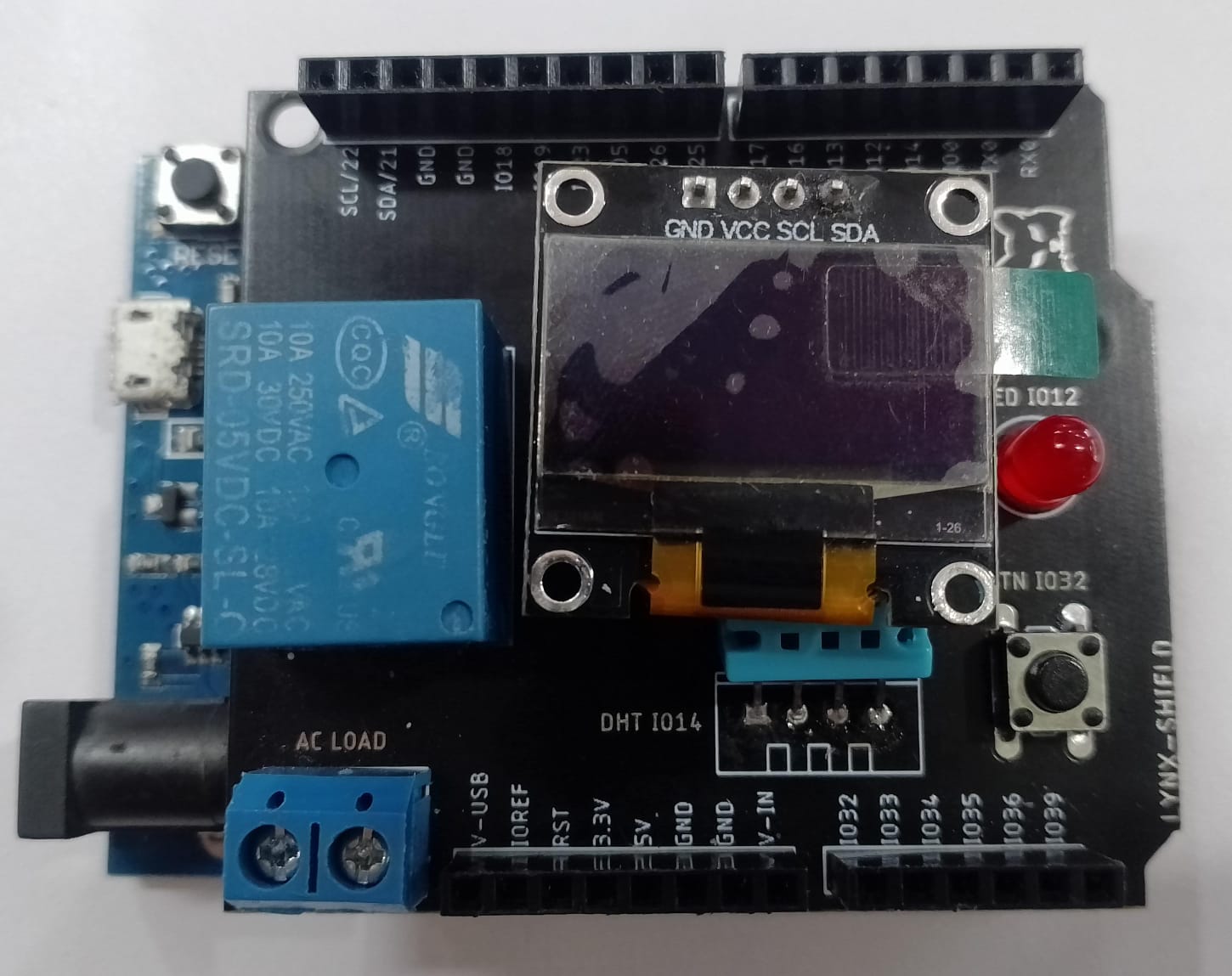
Prerequisites
The materials required follow the General Prerequisites on the previous page. If you have not prepared the requirements on that page, then you can visit the following page.
General Prerequisites ESP8266 Wi-FiThe additional materials specific to this project are as follows.
Shield Workshop Antares
I2C-based 0.96inch 128x64 pixel SSD1036 OLED module

SSD1036 0.96inch OLED Module Picture Antares ESP HTTP Library. This documentation uses the Antares ESP HTTP library version 1.4.0.
OLED display library. This documentation uses Adafruit_SSD1306 by Adafruit version 2.5.7.
Software Postman
Follow These Steps
1. Launch the Arduino IDE application
2. Opening Sample Programme
Here is the programme code of the GET_DATA_OLED example.
3. Set WiFi Credential and Antares Credential in Program Code
Change the HTTP Protocol parameters in the following variables *ACCESSKEY, *WIFISSID, *PASSWORD, *projectName, and *deviceName. Adjust to the parameters in the Antares console.

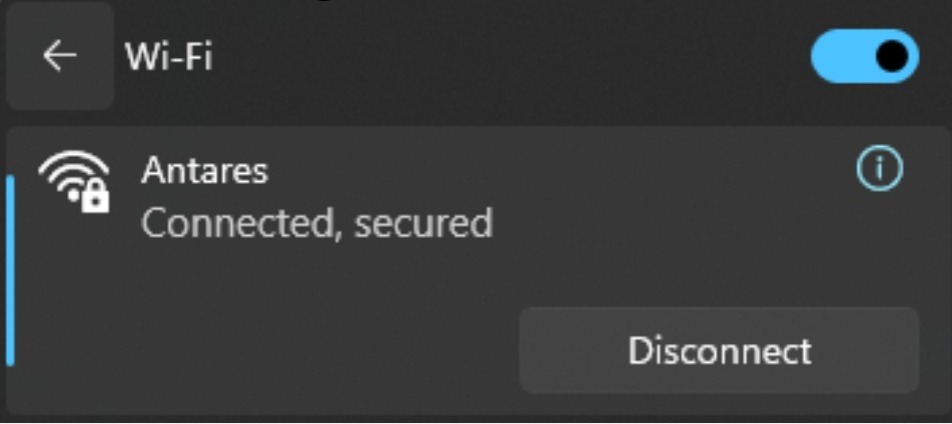


4. Compile and Upload Program
Connect the ESP8266 WEMOS D1R2 with your computer and make sure the Communication Port is read.
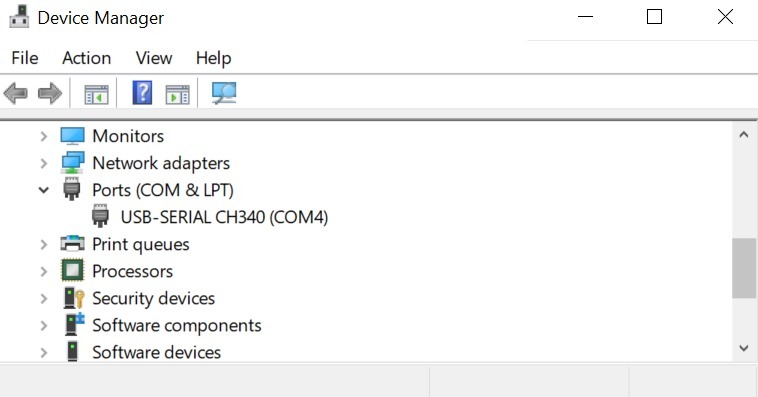
Set up the ESP8266 WEMOS D1R2 board by clicking Tools > Board > esp8266 in the Arduino IDE, then make sure the one used is LOLIN (WEMOS) D1 R2 & mini. Select the port according to the communication port that is read (in this case COM4). The result will look like the following picture.
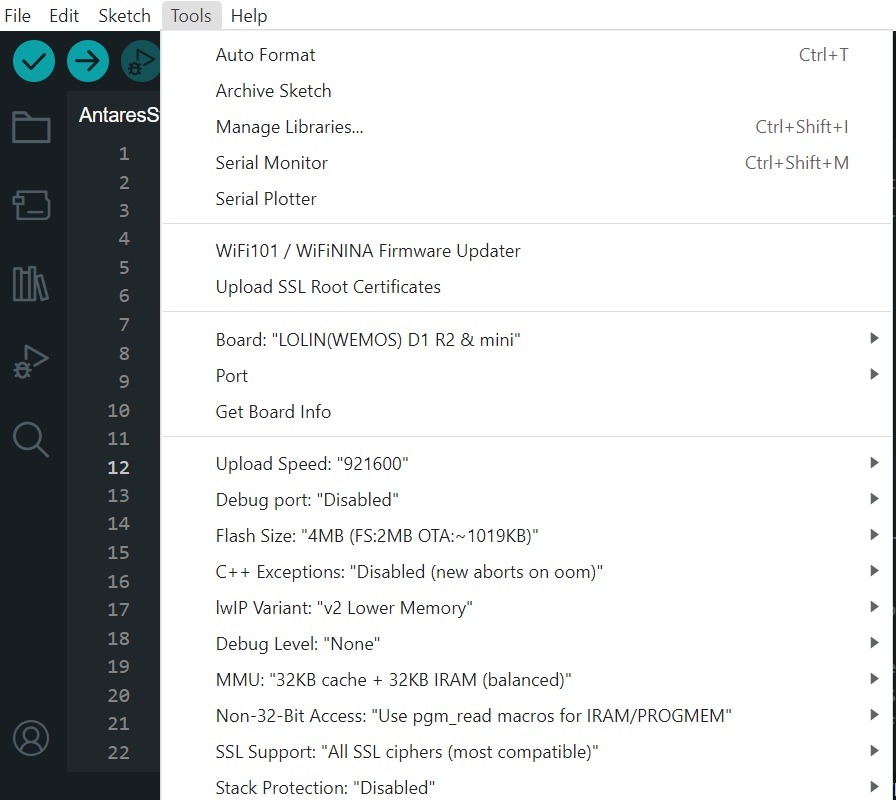
After all the setup is complete, upload the programme by pressing the arrow icon as shown below. Wait for the compile and upload process to finish.

If the programme upload is successful, it will look like the following image.
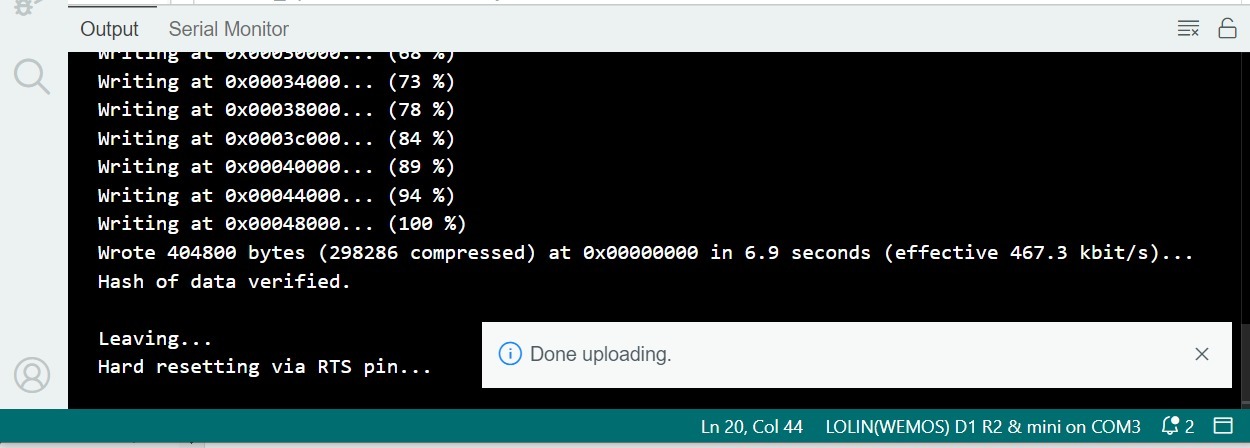
After uploading the programme, you can view the serial monitor to debug the programme. The serial monitor icon is shown in the following image.

Set the serial baud rate to 115200 and select BothNL & CR. The result will look like the following image.
Make sure the serial baud rate matches the value defined in the programme code. If the serial baud rate is not the same between the programme code and the serial monitor, the ASCII characters will not be read properly.

5. Setup Software POSTMAN
In this step you need POSTMAN software, you can input the end-point, request header and request body first by following the following format.
End Point
Method
POST
URL
https://platform.antares.id:8443/~/antares-cse/antares-id/your-application-name/your-device-name
Request Header
Key
Value
X-M2M-Origin
your-access-key
Content-Type
application/json;ty=4
Accept
application/json
The result will be as shown below.

Next, you need to input the request body by following the following format.
Request Body
In the POSTMAN software, select the Body tab then select raw and enter the payload according to the request body you want to use as shown below.
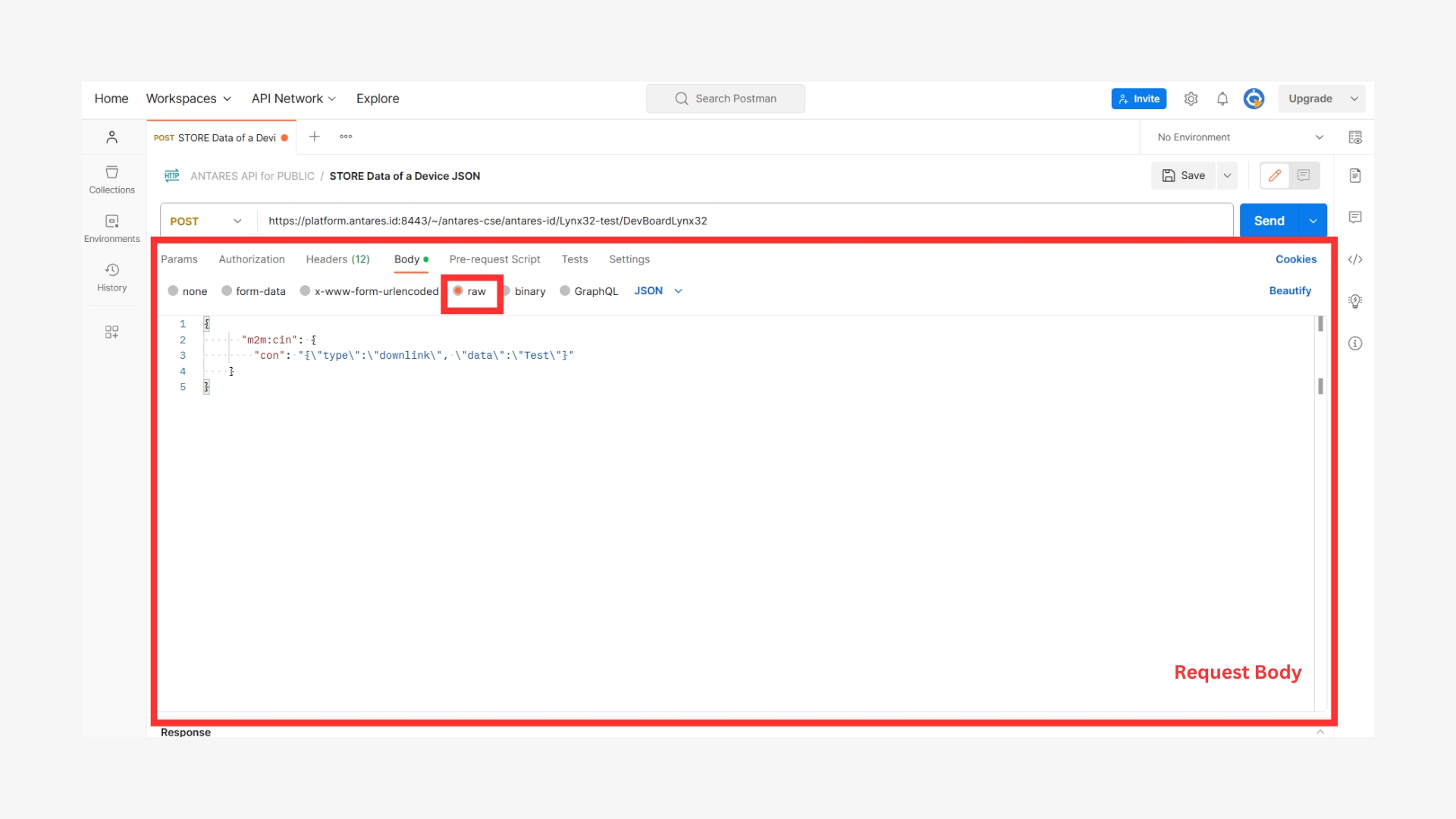
6. Sending POSTMAN Messages to the Antares Server
After the POSTMAN software setup is complete, it's time to send the POST command. The "Test" field is filled with the string "Hello 123" as the message to be sent via HTTP protocol to the Antares server.
If you have finished filling in the "Test" field, then press the Send button on the POSTMAN software. Looks like the following picture.
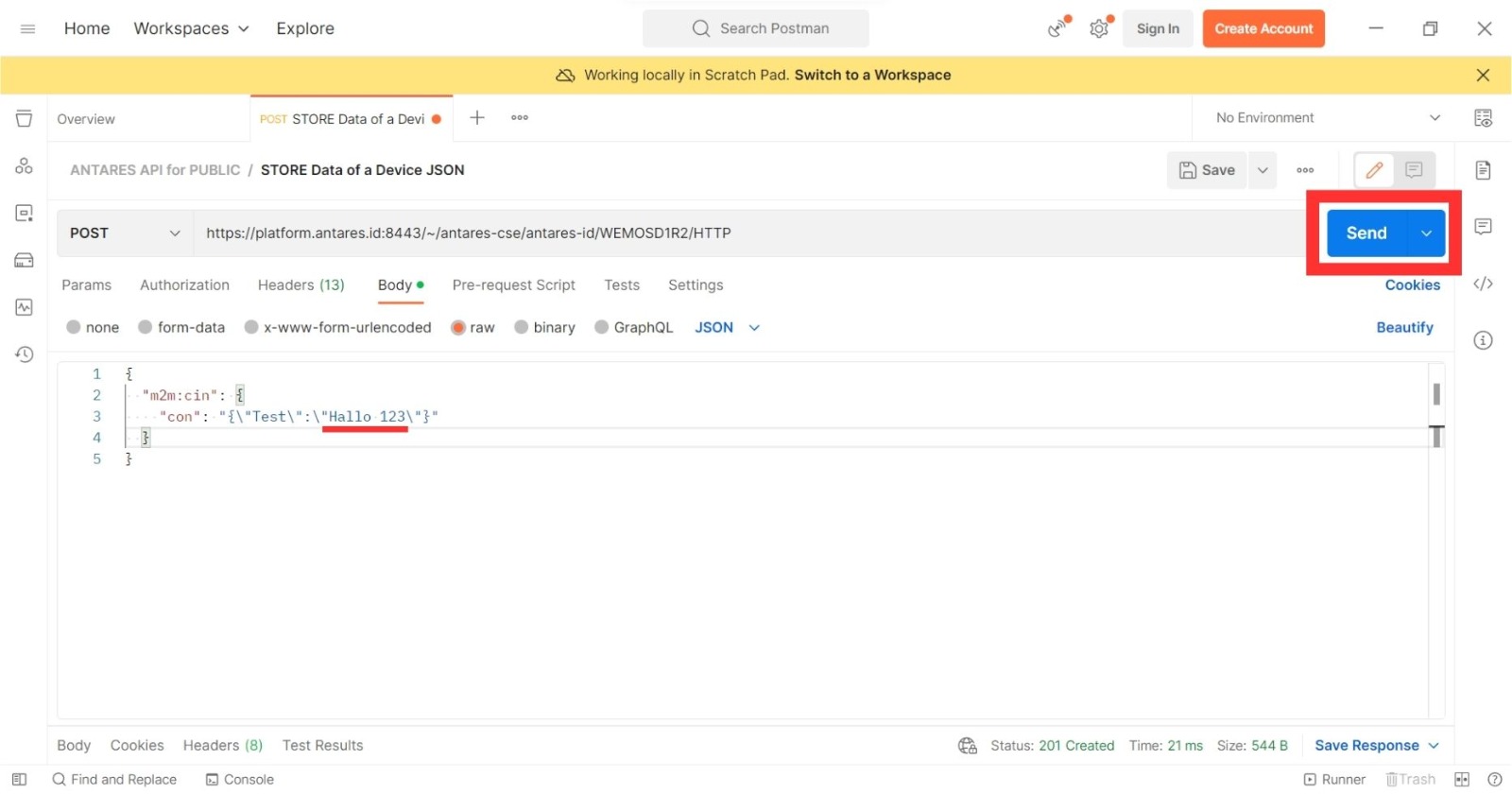
If the HTTP request through POSTMAN software is successful, the POSTMAN software response section will appear as shown below

7. Check Data in Antares
After uploading the programme successfully, then open the device antares page and see if the data has been successfully sent.


8. Output program
Get data from the Antares IoT Platform and display it on the OLED display after connecting to Wi-Fi is shown in the figure below:

Last updated